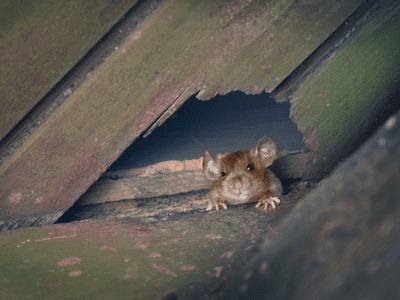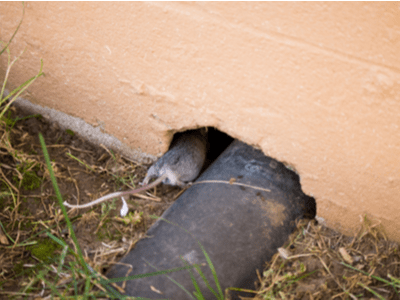It may not be pleasant but once mice get into your home, the best way to get rid of them is to catch them. Poisons and baits may work, but you could end up with dead mice in your walls. The best way to catch mice is with the right trap and the right bait. We’ll tell you how.
Catching mice can be slow and frustrating. Mice are notoriously fussy eaters and often take small nibbles of new foods to ensure they’re safe. If you reach your limit with mice avoiding traps and running rampant, remember your secret weapon: Gregory Pest Solutions. One of our technicians can identify the source of your mouse problem and devise a plan for eliminating them for good!
Why Do Mice Come in Your House?
Mice will most likely come into your home during the fall. As the season changes, they seek out warm, safe places to nest where there is a reliable food source. Mice in winter burrow beneath the snow but don’t hibernate. They forage and rely on food caches to sustain them until the spring.
If a mouse can get into your home and avoid the challenges that come with winter, they will. They are nocturnal and may not be immediately evident. They eat nearly anything and will scour your pantry, cupboards and garbage for whatever they can find, including pet food.
What’s The Best Way to Catch a Mouse?
To catch the mice running amok in your home, you need three things:
- The right trap
- The right bait
- The right placement
Below are our best tips to maximize your mouse catching potential and remove rodent freeloaders from your home.
What Type of Mouse Trap is Best?

There are many types of traps to choose from – snap traps, glue traps, electronic traps and live traps. For the money, you can’t go wrong with a classic snap trap. The low price means you can afford many of them – which you’ll want. They also kill mice quickly unlike glue traps, so you don’t have to deal with a live mouse suffering. Finally, snap traps are easy to use and reuse.
What Attracts Mice to Traps?
What do you put on a mouse trap? Not cheese. Mice prefer seeds and grains. Nut butters tend to be your best bet. But only a little bit. As mentioned above, mice are picky eaters that will steal a tiny taste from anew food supply. Don’t let them swipe a small sample and get away, make them work for it so that they trigger the trap.
A second bait strategy is to use nesting items like twine or cotton balls. New mice seek out soft materials to build their nests with. Wrap nesting material around the trap’s trigger point to ensure it goes off when they try to take it.
Pro tip: wear gloves when you bait and place your traps. Mice could be spooked by your scent.
Where Should You Place Your Mouse Traps?

Placement is crucial, otherwise you’ll just have mice avoiding traps and running free all night. Don’t be shy about setting several traps in the same area. More traps will generally yield more results. Areas where you want to place your traps:
- Against walls. Mice don’t like venturing into open areas and stick close to walls.
- Along pathways. Mice are creatures of habit and will travel the same routes over and over. Once you discover these, fill them with traps.
- Under cabinets. If necessary, take drawers out to reach beneath and behind cabinets where mice are likely traveling.
- Near wall openings. If you notice holes in your wall or gaps for plumbing where mice can get in and out, set traps beneath them.
- Next to pet food. Mice may inspect your pet’s food dish after hours. Just make sure your pets are kept away from the traps.
Don’t be shy setting up multiple traps in all the above areas. You’ll want an aggressive strategy that increases your odds of catching as many mice as possible nightly.
Once you do catch mice, dispose of them with plastic or latex gloves and wash your hands afterward. Mice carry several unpleasant diseases.
How to Stop Mice from Entering Your Home

Once you successfully catch all the mice in your home, you’ll want to make sure they don’t get back in. Mice are excellent climbers and can fit through tiny cracks and holes the size of a dime.
To protect your home from mice getting in, seal all the potential openings:
- Foundation cracks
- Door and window frames
- Torn screens
- Vents
- Utility access points
- Missing shingles
- Rotten or missing siding
For help identifying where mice are getting into your house, contact Gregory. One of our technicians can survey your home and help you seal it against mice and other pests.
Learn more at our mouse removal page.
Mouse Pest Control
Now that you know how to lure out a mouse, you can get started on catching them. Mounting a full campaign against mice in your home can be a lot of work. But you’re never alone. When you need expert help getting rid of mice, contact Gregory Pest Solutions. Our experienced team will make sure your pest problem goes away for good.

